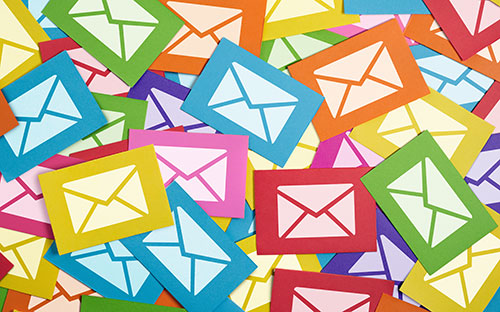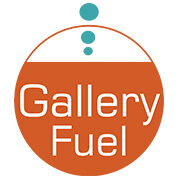 In the world of art galleries, building relationships with mailing list subscribers and prospective art collectors is essential for long-term success. One invaluable strategy that often goes overlooked is implementing an email nurture sequence. In this blog post, we will explore why this approach is crucial and provide actionable insights for art gallery businesses to leverage its benefits effectively.
In the world of art galleries, building relationships with mailing list subscribers and prospective art collectors is essential for long-term success. One invaluable strategy that often goes overlooked is implementing an email nurture sequence. In this blog post, we will explore why this approach is crucial and provide actionable insights for art gallery businesses to leverage its benefits effectively.
If your art gallery has a mailing list signup form on its website, chances are you have a significant number of subscribers whom you don’t personally know. But how can you establish a connection with these individuals based solely on an email address? This is where an automated email nurture sequence comes into play. By implementing a well-crafted sequence, you can help new subscribers get acquainted with your gallery, fostering their comfort and encouraging them to engage with you.
The Untapped Potential of an Email Nurture Sequence
While email nurture sequences are commonly used in various industries to nurture relationships, it is surprising how rarely art galleries employ this strategy. As someone subscribed to hundreds of art gallery email lists, I can attest to the untapped potential in this area.
Think of an email nurture sequence as a first date with your subscribers. They have shown interest in your gallery by joining the mailing list, and now it’s your opportunity to make an excellent first impression and get to know each other better. A well-crafted nurture sequence consists of 3-5 emails designed to introduce your gallery, highlight your artists and services, and encourage subscribers to share their preferences and needs. Towards the end of the sequence, you can invite them to engage further through an online survey or one-on-one conversation.
The Advantages of a Nurture Email Sequence for Your Gallery
An email nurture sequence is a powerful tool that can help art galleries introduce their prospects to their program, mission, artists, and services. This approach allows galleries to educate potential clients about their offerings in a comfortable and unintimidating manner while keeping them engaged and interested in opening regular gallery newsletters. The best part is that the sequence is pre-built and scheduled to be automatically triggered whenever a new subscriber joins the mailing list.
For art galleries, cultivating relationships with new art collectors is crucial. The email list is a valuable asset that comprises warm leads for future sales. However, keeping subscribers engaged and making them feel comfortable reaching out can be challenging. That’s where an email nurture sequence comes in handy.
With an email nurture sequence, galleries can create a series of emails that are designed to build trust and establish a relationship with subscribers. These emails can include information about the gallery’s history, its mission, and its artists. They can also highlight upcoming events, exhibitions, and exclusive offers. By providing value to subscribers, galleries can keep them engaged and interested in what the gallery has to offer.
The email nurture sequence is a set-it-and-forget-it tool that saves time and effort. Once it’s set up, galleries can focus on other aspects of their business while the sequence works in the background. It’s an effective way to stay top-of-mind with subscribers and build long-term relationships with potential clients.
Consider implementing this strategy if:
- Your collector base consists mostly of older individuals who are downsizing and purchasing art less frequently. Building strong relationships with a new generation of collectors is crucial.
- Generation X and Millennial art enthusiasts attend gallery events but hesitate to make purchases due to a lack of confidence or knowledge about collecting art.
- Your email list is extensive, but open and click rates for your newsletters are disappointingly low.
With each new subscriber to your list, a nurture sequence starts to build those new relationships in a helpful and interesting way.
Implementing the Strategy for Your Gallery Mailing List
To put the email nurture sequence strategy into action, it is essential to plan ahead and create each email within your email marketing platform. Once you have set up the process, it will run on autopilot, freeing up your time to focus on the day-to-day operations of running your gallery.
To get started, begin by outlining your goals for the nurture sequence. It is crucial to define your objectives and understand why subscribers join your gallery mailing list in the first place. Aligning your content with those reasons will help you create a more effective email sequence.
Next, it’s time to plan each email in detail. When planning the content for the emails in the sequence, consider your gallery’s overall program, the value proposition for collectors, the services you offer, and the artists you represent. Additionally, incorporate specific calls to action for each topic. Keeping the majority of the content evergreen will minimize the need for frequent updates.
It is recommended to keep your emails concise and adopt a relaxed tone. Each email should provide an opportunity for subscribers to contact the gallery, respond to a survey, or explore your website for more information. This approach not only adds value to your readers but also allows you to track success and identify the most resonant calls to action.
By following these steps, you can create a successful email nurture sequence that engages your subscribers and drives conversions. Remember to regularly review and update your email sequence to ensure it remains relevant and effective.
I put together a checklist to walk you through the planning, creating, and tracking stages. Also included are some ideas for email topics that might appeal to your gallery mailing list subscribers and align with your goals.
 Checklist – Gallery Nurture Sequence
Checklist – Gallery Nurture Sequence
To the Point
If your art gallery business needs to find new ways to forge relationships with collectors, then a nurture sequence should definitely be added to your marketing strategy. Many potential art collectors enjoy art and can afford to buy it but don’t know where to begin or feel intimated walking into an art gallery.
An art gallery email nurture sequence is a long-term strategy to cultivate relationships for future sales with your mailing list subscribers. The intention is not to sell immediately. Remember the first date analogy and be creative with the kind of information you share in your sequence.
Don’t miss out on the tremendous potential of an email nurture sequence for your art gallery. By building rapport, overcoming buyer hesitations, and nurturing relationships, you can forge meaningful connections with collectors and drive future sales. Remember, an effective nurture sequence is designed to create a memorable experience for your subscribers, just like a first date that sets the stage for a lasting connection.


Not sure what content to put in emails that won’t seem to be “too much”! People suscribe but do they want us toi email them so many times afterwards without a specific reason, a personal reason like them being interested in one artwork etc…?
Anne-Marie, This is a great question. I understand your concerns about if someone inquires about an artwork, should they get a nurture series. I would send it, but it’s a personal preference. Would you send them newsletters?
The nurture sequence I’m recommending in this article is primarily for people who join a gallery newsletter list because they want to stay informed. That’s your reason. Art lovers that fill out their name and email and hit subscribe on Helwasergallery.com. They are not inquiring about a specific piece of art.
The people who subscribe to the gallery’s newsletter are the ones you don’t know anything about, and nurturing that relationship with an automated email series can be so valuable.
I get it – you don’t want to bombard them. You can space out the emails for whatever timeframe you’re comfortable with, such as over six months. I like the dating analogy. Use the series to get to know one another before sending them more sales-focused emails, like your regular newsletter. Check out the checklist linked in the article for content ideas.
I hope this helps. Let me know if you want to chat offline about your mailing list. I’m happy to help.
Katherine